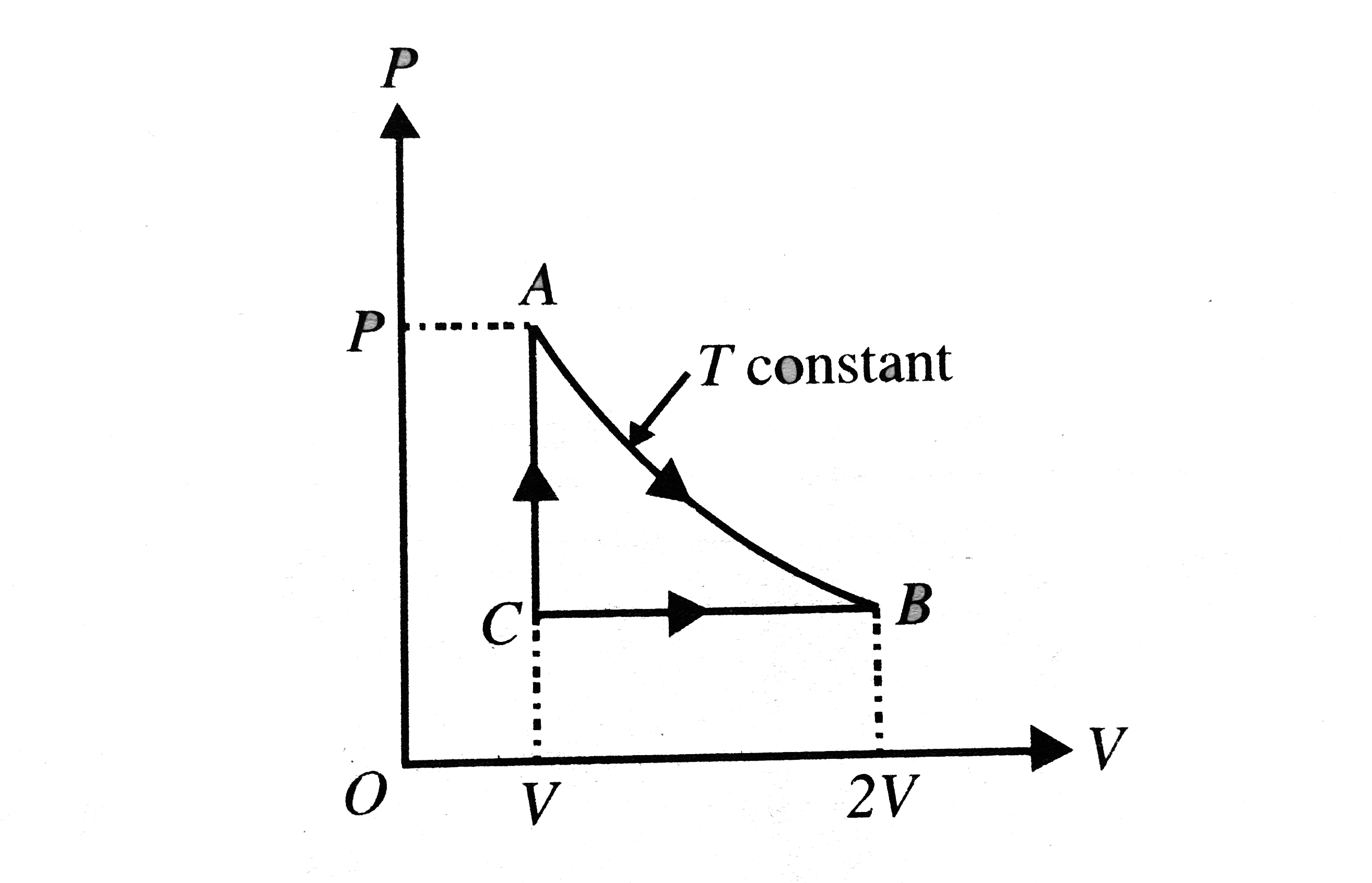Air is initially at 260∘ C and 700 N/m2 and occupied 0.028 m3. The air is expanded at constant pressure to 0.084m3. A polytropic process with x = 1.5 is then carried out followed by a constant temperature process which completes a cycle. (a) Sketch P-V graph (b) Find heat received and heat rejected in the cycle (c) Efficiency of cycle
124J,−17.7J,−58.4J(c)38.6%
Topper's Solved these Questions
- THERMODYNAMICSBOOK - AAKASH SERIESCHAPTER - THERMODYNAMICSEXERCISE - NUMERICAL EXERCISE (LEVEL-2)
35 Videos
- THERMODYNAMICSBOOK - AAKASH SERIESCHAPTER - THERMODYNAMICSEXERCISE - QUESTIONS FOR DESCRIPTIVE ANSWERS
7 Videos
- THERMODYNAMICSBOOK - AAKASH SERIESCHAPTER - THERMODYNAMICSEXERCISE - VERY SHORT ANSWER TYPE QUESTIONS
24 Videos
- THERMAL PROPERTIES OF MATTERBOOK - AAKASH SERIESCHAPTER - THERMAL PROPERTIES OF MATTEREXERCISE - ADDITIONAL PRACTICE EXERCISE (LEVEL - II) PRACTICE SHEET (ADVANCED) Integer/Subjective Type Questions
2 Videos
- THERMOMETRY BOOK - AAKASH SERIESCHAPTER - THERMOMETRY EXERCISE - Numerical Exercise (LEVEL- 1)
11 Videos
Similar Questions
Air is initially at 260∘C and 700pa and occupied 0.028m3. The air is expanded at constant pressure to 0.084m3. A polytropic process with n=1.5 is then carried out followed by a constant temperature process which complete the cycle.
(a) sketch cycle in P−V.
(b) find heat received and heat rejected in the cycle.
(c) efficiency of cycle.
View SolutionThe density (ρ) versus pressure (p) graph of one mole of an ideal monoatomic gas undergoing a cyclic process is shown in figure. Molecular mass of gas is M.

(a) Find work done in each process.
(b) Find heat rejected by gas in one complete cycle.
(c) Find the efficiency of the cycle.
View Solution
Knowledge Check
A steel tank holds 0.2 m3 of air at a pressure of 5 atm. The volwne of air that would occupy at the same temperature but at a pressure l atm is
A0.2m3B1m3C5m3D105m3
The density (ρ) versus pressure (p) graph of one mole of an ideal monoatomic gas undergoing a cyclic process is shown in figure. Molecular mass of gas is M.
(a) Find work done in each process.
(b) Find heat rejected by gas in one complete cycle.
(c) Find the efficiency of the cycle.

View SolutionThe pressure versus volume graph of one mole of an ideal monatomic gas undergoing a cyclic process is shown in figure. The molecular mass of the gas is M.

(a) Find the work done in each process.
(b) Find heat rejected by gas in one complete cycle.
(c) Find the effiency of the cycle.
View SolutionOne mole of a mono atomic gas of molar mass M undergoes a cyclic process as shown in the figure. Here ρ is density and P is pressure of the gas.
(a) Calculate the heat rejected by the gas in one complete cycle.
(b) Find the efficiency of the cycle.

View Solution10 gm of oxygen at a pressure 3×105N/m2 and temperature 10∘C is heated at constant pressure and after heating it occupies a volume of 10 litres. (a) Find the amount of heat received by the gas and (b) the energy of thermal motion of gas molecules before heating.
View SolutionOne mole of a gas is carried through the cycle shown in Fig. The gas expands at constant temperature T from volume V to 2V. It is them compressed to the initial volume at constant pressure and is finally brought back to its original state by heating at constant volume. Calculate the work done by the gas in complete cycle.

View SolutionOne mole of a gas is carried through the cycle shown in Fig. The gas expands at constant temperature T from volume V to 2V. It is them compressed to the initial volume at constant pressure and is finally brought back to its original state by heating at constant volume. Calculate the work done by the gas in complete cycle.

View SolutionA gas is initially at a pressure of 100kPa and its volume is 2.0m3. Its pressure is kept constant and the volume is changed from 2.0m3 to 2.5m3. Its volume is now kept constant and the pressure is increased from 100kPa to 200kPa. The gas is brought back to its initial state, the pressure varying linearly with its volume.
(a) Whether the heat is supplied to or exerted from the gas in the complete cycle ?
(b) How much heat was supplied or extracted ?
View Solution
